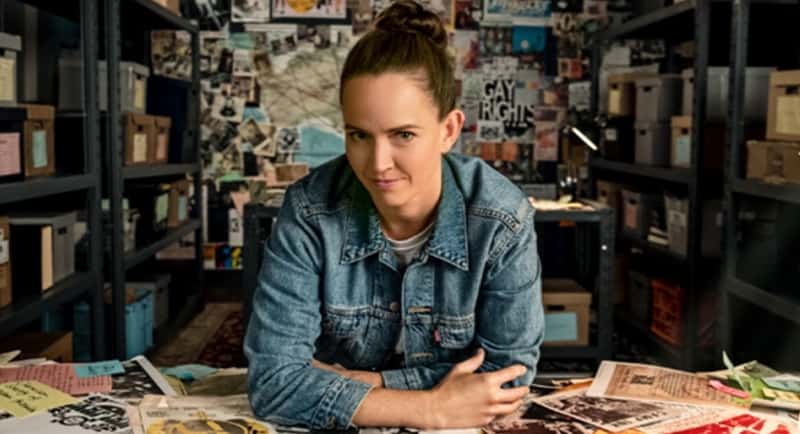From Cook to convicts, anyone who has sat through school history lessons has some level of understanding about the history of Australia. But there’s another, hidden history – one of gay diggers, lesbian convict gangs, trans entrepreneurs, and cross-dressing bushrangers.
As part of the ABC’s WorldPride coverage, comedian Zoë Coombs Marr is set to host Queerstralia. The three-part documentary series looks into the untold – and fascinating – Queer history of Australia.
Mediaweek spoke to Coombs Marr ahead of the Queerstralia premiere at 8:30pm, February 28 on ABC and ABC iview.
See Also: Mercado on TV: Happy WorldPride and Mardi Gras, Welcome Queerstralia
How did you get involved in Queerstralia? What made you say ‘yes’ to the show?
“I almost feel like Queerstralia happened to me in a way, it’s a beast that has a mind of its own. It came about in the way that I think a lot of projects do – I was pitching something else and that didn’t stick, so I said as a throwaway ‘or, we could do a Queer history of Australia, but I’m sure someone’s already done that’. When we realised that this hadn’t really been done, at least not in this way, I thought ‘oh shit, I think I have to do this’.
“I have this rule that once I’ve thought of something I have to do it, even if – and especially if – it seems like either a bad idea or impossible. The time was right and the opportunity presented itself, I had to go all in.”
Did you know what you were in for when it came to making a documentary like this?
“Oh no, I had no idea what I was getting into, absolutely not! If you told me then I might not have done it – it’s hard making documentaries, I don’t know if anyone knows that! I have approached it guns blazing and gone all in, but the other part of it was the team that I had the opportunity to work with.
“Jon Casimir is the EP, he’s been on from the beginning and gave me the opportunity to do it. Stamatia Maroupas is our director, she’s incredible. We’ve got incredible editors and researchers, there’s a whole team of which I’m just the face.
“Everyone who touches this project is really invested because it’s a really special opportunity to tell these histories and to try to honour them. We want to tell them in a way that is true to the humour and strangeness of Queer people and Queer history.”
Speaking of the researchers, we’ve all heard the stories of two people who lived together for their entire lives, never leaving each other’s side, yet history remembers them as ‘best friends’ or ‘roommates’. Did you have to dig to find these stories, or were they right in front of anyone willing to look?
“We’re everywhere! We’re cockroaches, we’re just everywhere and we won’t go away! [laughs]
“A big part of it is interpretation. There are so many people throughout history where you’re like ‘they are dykes, that’s a couple of dykes right there,’ but the historians say ‘well, we don’t know’. It’s not so much finding the stories, but piecing them together in a way that makes sense and that is accurate, because a lot of the time the stories haven’t really been recorded in a way that most other histories are recorded.
“There’s a lot of guessing that you have to do, because people were hiding themselves as well. That’s what’s so interesting and so difficult about it, but also why it’s so important.”
What do you hope audiences get out of Queerstralia?
“I hope they enjoy it, I want them to like it, and I want them to learn something.
“It’s for straight audiences and Queer audiences equally. I really want Queer people to see themselves in there, and I want straight people to see a perspective that they might not have seen. A lot of this history was news to me – Queer people don’t get a crash course in Queer history when we come out. We don’t know this stuff inherently. Most Queer people – myself included – don’t know a lot of this history. I hope there are lots of revelations and interesting facts that people didn’t know in there.
“I also wanted to present a different side to Queer stories. It’s not just Mardi Gras and marriage equality, it’s a much bigger and more complex story than that. It’s funny and strange, and not everyone’s nice. There are a lot of really dark and tragic and emotional things in it, but it’s not overly worthy. I didn’t want to make something that was treating Queer people like victims or some really sad story, I wanted to celebrate all the absolutely wild ways that people have lived their lives and the amazing things that they’ve done.”
